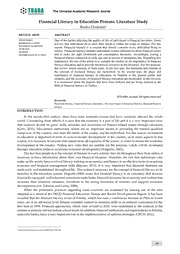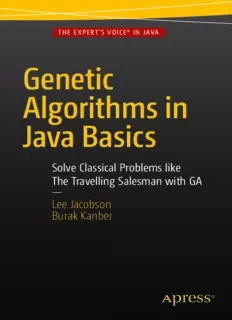
Genetic Algorithms in Java Basics PDF
Preview Genetic Algorithms in Java Basics
J BOOKS FOR PROFESSIONALS BY PROFESSIONALS® ac THE EXPERT’S VOICE® IN JAVA o b s o n · K a Genetic Algorithms in Java Basics n b e r Genetic Genetic Algorithms in Java Basics is a brief introduction to solving problems G using genetic algorithms, with working projects and solutions written in the e n Java programming language. This book guides you step-by-step through various e implementations of genetic algorithms and some of their common applications, to ti c give you a practical understanding, enabling you to solve your own unique, individual A Algorithms in problems. Aft er reading this book you will be comfortable with the language specifi c lg issues and concepts involved with genetic algorithms and you’ll have everything o r i you need to start building your own. t h m Genetic algorithms are frequently used to solve highly complex real world problems s and with this book you too can harness their problem solving capabilities. Starting Java Basics i n with a simple example to help learn the basics in Chapter 2, the book then adds J examples of using robot controls, and the traveling salesman problem to i llustrate a v more and more aspects of implementing genetic algorithms. So step into this a intriguing topic and learn how you too can improve your soft ware with genetic B a algorithms, and see real Java code at work for use on your own projects and research. s i c •Guides you through the theory behind genetic algorithms s Solve Classical Problems like •Explains how genetic algorithms can be used for soft ware developers trying to solve a range of problems The Travelling Salesman with GA •Provides step-by-step guides to implementing genetic algorithms in Java using simple to follow processes — Lee Jacobson Burak Kanber IISSBBNN 99787-81--14-84428-4023-290-3329-3Shelve in: Programming Languages/Java User level: Intermediate–Advanced 9 781484 203293 SOURCE CODE ONLINE www.apress.com Genetic Algorithms in Java Basics ■ ■ ■ Lee Jacobson Burak Kanber Genetic Algorithms in Java Basics An Apress Advanced Book Copyright © 2015 by Lee Jacobson and Burak Kanber This work is subject to copyright. All rights are reserved by the Publisher, whether the whole or part of the material is concerned, specifically the rights of translation, reprinting, reuse of illustrations, recitation, broadcasting, reproduction on microfilms or in any other physical way, and transmission or information storage and retrieval, electronic adaptation, computer software, or by similar or dissimilar methodology now known or hereafter developed. Exempted from this legal reservation are brief excerpts in connection with reviews or scholarly analysis or material supplied specifically for the purpose of being entered and executed on a computer system, for exclusive use by the purchaser of the work. Duplication of this publication or parts thereof is permitted only under the provisions of the Copyright Law of the Publisher’s location, in its current version, and permission for use must always be obtained from Springer. Permissions for use may be obtained through RightsLink at the Copyright Clearance Center. Violations are liable to prosecution under the respective Copyright Law. ISBN-13 (pbk): 978-1-4842-0329-3 ISBN-13 (electronic): 978-1-4842-0328-6 Trademarked names, logos, and images may appear in this book. Rather than use a trademark symbol with every occurrence of a trademarked name, logo, or image we use the names, logos, and images only in an editorial fashion and to the benefit of the trademark owner, with no intention of infringement of the trademark. The use in this publication of trade names, trademarks, service marks, and similar terms, even if they are not identified as such, is not to be taken as an expression of opinion as to whether or not they are subject to proprietary rights. While the advice and information in this book are believed to be true and accurate at the date of publication, neither the authors nor the editors nor the publisher can accept any legal responsibility for any errors or omissions that may be made. The publisher makes no warranty, express or implied, with respect to the material contained herein. Managing Director: Welmoed Spahr Lead Editor: Steve Anglin Technical Reviewer: John Zukowski and Massimo Nardone Editorial Board: Steve Anglin, Louise Corrigan, Jim DeWolf, Jonathan Gennick, Robert Hutchinson, Michelle Lowman, James Markham, Susan McDermott, Matthew Moodie, Jeffrey Pepper, Douglas Pundick, Ben Renow-Clarke, Gwenan Spearing Coordinating Editor: Jill Balzano Compositor: SPi Global Indexer: SPi Global Artist: SPi Global Distributed to the book trade worldwide by Springer Science + Business Media New York, 233 Spring Street, 6th Floor, New York, NY 10013. Phone 1-800-SPRINGER, fax (201) 348-4505, e-mail orders- , or visit . Apress Media, LLC is a California LLC and ny@springer-sbm.com www.springer.com the sole member (owner) is Springer Science + Business Media Finance Inc (SSBM Finance Inc). SSBM Finance Inc is a Delaware corporation. For information on translations, please e-mail , or visit . rights@apress.com www.apress.com Apress and friends of ED books may be purchased in bulk for academic, corporate, or promotional use. eBook versions and licenses are also available for most titles. For more information, reference our Special Bulk Sales–eBook Licensing web page at . www.apress.com/bulk-sales Any source code or other supplementary material referenced by the author in this text is available to readers at . For detailed information about how to locate your book’s source code, www.apress.com go to . www.apress.com/source-code/ Contents at a Glance About the Authors ��������������������������������������������������������������������������ix About the Technical Reviewers ������������������������������������������������������xi Preface �������������������������������������������������������������������������������������������xiii ■ Chapter 1: Introduction ���������������������������������������������������������������1 ■ Chapter 2: Implementation of a Basic Genetic Algorithm ������21 ■ Chapter 3: Robotic Controllers ��������������������������������������������������47 ■ Chapter 4: Traveling Salesman ��������������������������������������������������81 ■ Chapter 5: Class Scheduling ����������������������������������������������������105 ■ Chapter 6: Optimization ����������������������������������������������������������139 Index ���������������������������������������������������������������������������������������������153 iii Contents About the Authors ��������������������������������������������������������������������������ix About the Technical Reviewers ������������������������������������������������������xi Preface �������������������������������������������������������������������������������������������xiii ■ Chapter 1: Introduction ���������������������������������������������������������������1 What is Artificial Intelligence? ������������������������������������������������������������1 Biologically Analogies ��������������������������������������������������������������������������2 History of Evolutionary Computation �����������������������������������������������3 The Advantage of Evolutionary Computation ��������������������������������4 Biological Evolution ������������������������������������������������������������������������������6 An Example of Biological Evolution ����������������������������������������������������������������������7 Basic Terminology ���������������������������������������������������������������������������������8 Terms ������������������������������������������������������������������������������������������������������������������������8 Search Spaces ����������������������������������������������������������������������������������������9 Fitness Landscapes �������������������������������������������������������������������������������������������������9 Local Optimums ����������������������������������������������������������������������������������������������������12 Parameters �������������������������������������������������������������������������������������������15 Mutation Rate �������������������������������������������������������������������������������������������������������15 Population Size �����������������������������������������������������������������������������������������������������16 Crossover Rate �������������������������������������������������������������������������������������������������������16 v Contents Genetic Representations �������������������������������������������������������������������16 Termination ������������������������������������������������������������������������������������������17 The Search Process������������������������������������������������������������������������������17 CITATIONS ���������������������������������������������������������������������������������������������19 ■ Chapter 2: Implementation of a Basic Genetic Algorithm ������21 Pre-Implementation ���������������������������������������������������������������������������21 Pseudo Code for a Basic Genetic Algorithm ����������������������������������22 About the Code Examples in this Book �������������������������������������������22 Basic Implementation ������������������������������������������������������������������������23 The Problem�����������������������������������������������������������������������������������������������������������23 Parameters ������������������������������������������������������������������������������������������������������������24 Initialization ����������������������������������������������������������������������������������������������������������25 Evaluation ��������������������������������������������������������������������������������������������������������������30 Termination Check ������������������������������������������������������������������������������������������������32 Crossover ���������������������������������������������������������������������������������������������������������������34 Elitism ���������������������������������������������������������������������������������������������������������������������40 Mutation ����������������������������������������������������������������������������������������������������������������41 Execution ���������������������������������������������������������������������������������������������������������������43 Summary�����������������������������������������������������������������������������������������������44 ■ Chapter 3: Robotic Controllers ��������������������������������������������������47 Introduction �����������������������������������������������������������������������������������������47 The Problem �����������������������������������������������������������������������������������������48 Implementation�����������������������������������������������������������������������������������49 Before You Start ����������������������������������������������������������������������������������������������������49 Encoding ����������������������������������������������������������������������������������������������������������������50 Initialization ����������������������������������������������������������������������������������������������������������53 Evaluation ��������������������������������������������������������������������������������������������������������������59 Termination Check ������������������������������������������������������������������������������������������������68 vi Contents Selection Method and Crossover ������������������������������������������������������������������������71 Execution ���������������������������������������������������������������������������������������������������������������77 Summary�����������������������������������������������������������������������������������������������78 Exercises �����������������������������������������������������������������������������������������������������������������79 ■ Chapter 4: Traveling Salesman ��������������������������������������������������81 Introduction �����������������������������������������������������������������������������������������81 The Problem �����������������������������������������������������������������������������������������83 Implementation�����������������������������������������������������������������������������������83 Before You Start ����������������������������������������������������������������������������������������������������83 Encoding ����������������������������������������������������������������������������������������������������������������84 Initialization ����������������������������������������������������������������������������������������������������������84 Evaluation ��������������������������������������������������������������������������������������������������������������87 Termination Check ������������������������������������������������������������������������������������������������91 Crossover ���������������������������������������������������������������������������������������������������������������92 Mutation ����������������������������������������������������������������������������������������������������������������96 Execution ���������������������������������������������������������������������������������������������������������������98 Summary��������������������������������������������������������������������������������������������102 Exercises ���������������������������������������������������������������������������������������������������������������103 ■ Chapter 5: Class Scheduling ����������������������������������������������������105 Introduction ��������������������������������������������������������������������������������������105 The Problem ��������������������������������������������������������������������������������������106 Implementation��������������������������������������������������������������������������������107 Before You Start ��������������������������������������������������������������������������������������������������107 Encoding ��������������������������������������������������������������������������������������������������������������107 Initialization ��������������������������������������������������������������������������������������������������������108 The Executive Class ���������������������������������������������������������������������������������������������121 Evaluation ������������������������������������������������������������������������������������������������������������127 Termination ���������������������������������������������������������������������������������������������������������128 vii Contents Mutation ��������������������������������������������������������������������������������������������������������������130 Execution �������������������������������������������������������������������������������������������������������������132 Analysis and Refinement ����������������������������������������������������������������135 Exercises ���������������������������������������������������������������������������������������������������������������137 Summary��������������������������������������������������������������������������������������������137 ■ Chapter 6: Optimization ����������������������������������������������������������139 Adaptive Genetic Algorithms ��������������������������������������������������������139 Implementation ��������������������������������������������������������������������������������������������������140 Exercises ���������������������������������������������������������������������������������������������������������������142 Multi-Heuristics ��������������������������������������������������������������������������������143 Implementation ��������������������������������������������������������������������������������������������������143 Exercises ���������������������������������������������������������������������������������������������������������������144 Performance Improvements ����������������������������������������������������������144 Fitness Function Design �������������������������������������������������������������������������������������145 Parallel Processing ����������������������������������������������������������������������������������������������145 Fitness Value Hashing ����������������������������������������������������������������������������������������146 Encoding ��������������������������������������������������������������������������������������������������������������149 Mutation and Crossover Methods ��������������������������������������������������������������������149 Summary��������������������������������������������������������������������������������������������150 Index ���������������������������������������������������������������������������������������������153 viii About the Authors Lee Jacobson is a professional freelance software developer from Bristol, England who first began writing code at the age of 15 while trying to write his own games. His interest soon transitioned to software development and computer science which led him to the field of artificial intelligence. He found a passion for the subject after studying Genetic Algorithms and other optimization techniques at university. He would often enjoy spending his evenings learning about optimization algorithms such as genetic algorithms and how he could use them to solve various problems. Burak Kanber is a New York City native and attended The Cooper Union for the Advancement of Science and Art. He earned both a Bachelor’s and a Master’s degree in Mechanical Engineering, concentrating on control systems, robotics, automotive engineering, and hybrid vehicle systems engineering. Software, however, had been a lifelong passion and consistent thread throughout Burak’s life. Burak began consulting with startups in New York City while attending The Cooper Union, helping companies develop core technology on a variety of platforms and in various industries. Exposure to art and design at The Cooper Union also helped Burak develop an eye and taste for product design. Since founding Tidal Labs in 2009—a technology company that makes award-winning software for enterprise influencer management and content marketing–Burak has honed his skills in DevOps, Product Development, and Machine Learning. Burak enjoys evenings at home in New York with his wonderful fiancée and their cat Luna. ix About the Technical Reviewers Massimo Nardone holds a Master of Science degree in Computing Science from the University of Salerno, Italy. He worked as a PCI QSA and Senior Lead IT Security/Cloud/ SCADA Architect for many years, and currently works as the Security, Cloud and SCADA Lead IT Architect for Hewlett Packard Finland. He has more than 20 years of work experience in IT, including Security, SCADA, Cloud Computing, IT Infrastructure, Mobile, Security and WWW technology areas for both national and international projects. Massimo has worked as a Project Manager, Cloud/SCADA Lead IT Architect, Software Engineer, Research Engineer, Chief Security Architect, and Software Specialist. He worked as visiting lecturer and supervisor for exercises at the Networking Laboratory of the Helsinki University of Technology (Aalto University). He has been programming and teaching how to program with Perl, PHP, Java, VB, Python, C/C++ and MySQL for more than 20 years. He is the author of Beginning PHP and MySQL (Apress, 2014) and Pro Android Games (Apress, 2015). He holds four international patents (PKI, SIP, SAML and Proxy areas). John Zukowski is currently a software engineer with TripAdivsor, the world’s largest travel site ( ). He has been playing www.tripadvisor.com with Java technologies for twenty years now and is the author of ten Java-related books. His books cover Java 6, Java Swing, Java Collections, and JBuilder from Apress, Java AWT from O’Reilly, and introductory Java from Sybex. He lives outside Boston, Massachusetts and has a Master’s degree in software engineering from The Johns Hopkins University. You can follow him on Twitter at . http://twitter.com/javajohnz xi
Description:The list of books you might like

The 48 Laws of Power

$100m Offers

The Subtle Art of Not Giving a F*ck

Corrupt (Devil's Night #1)

Nutrient Composition of Rations for Short-Term, High-Intensity Combat Operations

To Sail Beyond the Sunset

Sustainable Management of Mining Operations
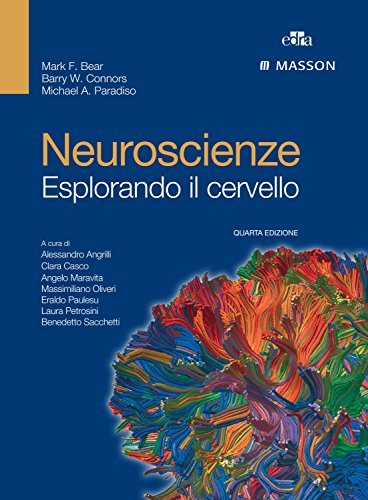
Neuroscienze. Esplorando il cervello, 4a Ed

Greek Government Gazette: Part 7, 2006 no. 914
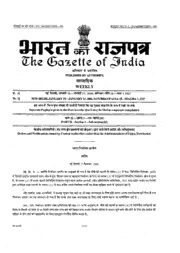
Gazette of India, 2006, No. 62

Greek Government Gazette: Part 7, 2006 no. 918

Справочник по гидротехнике. Разделы 1 и 2

A Companion to Spanish Women's Studies

Glencoe Literature: Reading With Purpose, Course 3

Marquem, irmãos, marquem!
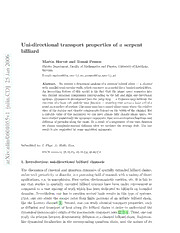
Uni-directional transport properties of a serpent billiard

Three Comedies by Bjrnstjerne M Bjrnson

Caferiler Kimlerdir?

Jeffry

Sufism and Sufi orders : god's spiritual paths ; adaption and

Aydın Çalışma ve İş Kurumu İl Müdürlüğü Resmi Web Sitesi

by Carmen Agra Deedy illustrated by Renato Alarcão The Frog Princess

